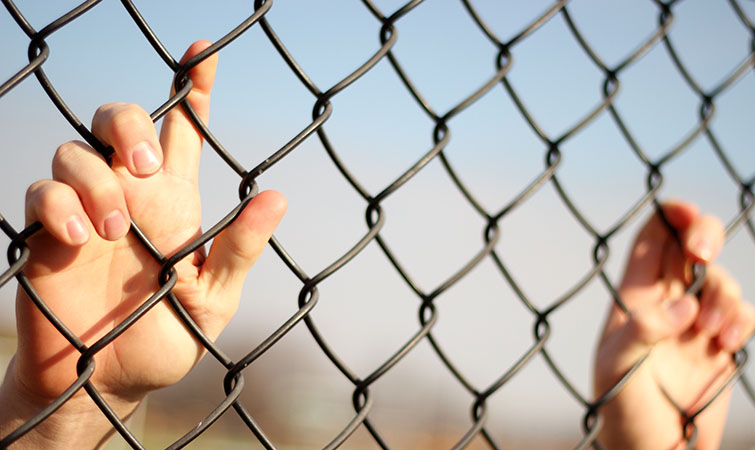In a State of Distress
A contemplation on the Current Condition of the United States Prison System
The United States holds 25 percent of all incarcerated people in the world. However, the actual population of the United States only represents 5 percent of the world’s population.
Holding the largest prison population out of any other nation, the United States surpasses China, India, and Brazil in terms of detained individuals, and possesses more jailed people than 186 other countries combined.
Correctional facilities serve the purpose that their name implies: rehabilitating unlawful people back into society. Prison remains a necessary institution based on the separating and remedying of harmful citizens, and will continue to be required into the unforeseeable future. However, the current status of the system has been severely disrupted through the disregard of glaring issues built up through decades of inaction and misaction. Through the continuation of neglected problems such as the war on drugs, mandatory minimums, laziness, and the prison-industrial complex, the current state of the U.S. incarceration system is long overdue for drastic reforms.
In 1971, Richard Nixon declared drug abuse the “public enemy number one” and directed large quantities of executive effort in order to eliminate it. Consequently, billions of U.S. tax dollars were and continue to be spent with the explicit intent of curbing drug addiction. At the time of this declaration and campaign to remove illicit psychoactive substances from the hands of the public, the overall U.S. drug addiction rate sat a little over 1%. After years of government spending, harsh sentencing, and seemingly endless operations and persecutions, the addiction rate still lies a little over 1%. Although only one factor is being considered, the onslaught against drug use has clearly demonstrated itself to be a failure with this statistic.
Excess spending yielding unobservable results does not stand as the only negative attribute of the bloated witch-hunt drug offenders are currently subject to. Around half of all federal and state prisoners are currently serving their time as a result of drug offences. A vast multitude of these convicts are bound not by violent drug-related transgressions and consequent punishment, but rather by harsh sentences slapped onto petty crimes such as possession.
This intensive punishment arose from the mandatory minimum sentencing that was put in place by hopeful legislation throughout the 80s and 90s. Those found in possession of certain quantities of narcotics were (and still are) coerced into serving a minimum sentence, such as five, ten, or even twenty years, with no exception or opportunity for lesser punishment.
Consequently, harmless addicts needing rehabilitation, those forced into drug-related activity by poverty, and young adults merely making stupid mistakes are collectively shoehorned into a congested system in which life-depriving, draconian punishment is issued under the seductive guise of “correction”. And the opinion that severe punishment is an imperative step in the process of curbing drug-use can easily be rebuttled. Partaking in the use of drugs, people are generally aware of the consequences of being caught. However, no person participating in these activities thinks that he or she will ever be caught. As a result, pushing penalties to the peak of brinkmanship fails to curb drug use, but rather fills prisons to their capacities with unexpected offenders.
Additionally, inmates finally released after serving their according sentences often find themselves in front of a judge again within months of being released. Over half of all freed prisoners are admitted into prison for a second time after their release back into society. This shows that the goal of rehabilitation set forth by policy and institution seldom reaps success. Serving years of life in prison not only limits employment opportunities for individuals, but also severely hinders their social standing among peers upon release. Lengthy, unwarranted imprisonment harms individuals, society as a whole, and the budget of the United States.
So why have hardly any measures been taken to correct the systematic suppression of drug users currently made possible by U.S. policy? Laziness? Members of Congress and the American public are certainly not incentivized to take action around an issue that is kept confined within the literal walls of prison. What reason would anyone have for the betterment of prisoner standings when society itself regards all prisoners as justly imprisoned? Politicians in particular hold a quite specific reason for keeping rapid incarceration where it is: money. Lobbyists belonging to private prisons fund those holding significant government positions, and in turn make money from the surge of prisoners flooding their gates. The system is a win-win for both Congress members and privatized prisons.
What can be done to fix this seemingly inevitable situation? If progress is going nowhere, what measures can even be taken? The roots of change do not need to begin with the abrupt reform of policy; it can begin with you. The challenge of prison reform can be taken on by the masses, and made into a collective movement. Group action and exposure will dictate results. With enough momentum, raw civilian force will cause policy to bend. The first action required to reach reform is not that of sweeping legislation, nor is it that of large-scale demonstrations; it merely needs to be a simple conversation.
From this year’s first print edition of The Central Trend

Jake Standerfer is joining the Central Trend for his third year on the staff as an Editor in Chief. He was one of the first people to join the staff after...



























































































